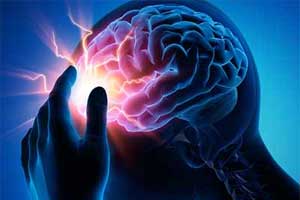- Home
- Editorial
- News
- Practice Guidelines
- Anesthesiology Guidelines
- Cancer Guidelines
- Cardiac Sciences Guidelines
- Critical Care Guidelines
- Dentistry Guidelines
- Dermatology Guidelines
- Diabetes and Endo Guidelines
- Diagnostics Guidelines
- ENT Guidelines
- Featured Practice Guidelines
- Gastroenterology Guidelines
- Geriatrics Guidelines
- Medicine Guidelines
- Nephrology Guidelines
- Neurosciences Guidelines
- Obs and Gynae Guidelines
- Ophthalmology Guidelines
- Orthopaedics Guidelines
- Paediatrics Guidelines
- Psychiatry Guidelines
- Pulmonology Guidelines
- Radiology Guidelines
- Surgery Guidelines
- Urology Guidelines
New epilepsy warning device may save thousands of lives

Scientists from the Netherlands have developed Nightwatch -- a new high-tech bracelet -- that can detect 85 percent of all severe night-time epilepsy seizures. This can reduce the worldwide number of unexpected night-time fatalities in epilepsy patients. The bracelet has a detection rate higher than any other currently available technology.
Results of the prospective trial are published in the scientific journal Neurology.
Johan Arends, neurologist, University Medical Center Utrecht, the Netherlands, and colleagues conducted the study to develop and prospectively evaluate a method of epileptic seizure detection combining heart rate and movement.
The study holds importance as sudden unexpected death in epilepsy (SUDEP) is a major cause of mortality in epilepsy patients. People with an intellectual disability and severe therapy-resistant epilepsy may even have a 20 percent lifetime risk of dying from epilepsy. Although there are several techniques for monitoring patients at night, many attacks are still being missed.
Also Read: Epilepsy per se and not antiepileptic drugs lower fertility in men
The bracelet developed by the consortium researchers recognizes two essential characteristics of several attacks: rhythmic jolting movements, and an abnormally fast heartbeat. In such cases, it sends out a wireless alert to nurses or carers.
The research team prospectively tested the bracelet, known as Nightwatch, in 28 intellectually handicapped epilepsy patients over an average of 65 nights per patient. The bracelet was restricted to sounding an alarm in the event of a severe seizure. The patients were also filmed to check if there were any false alarms or attacks that the Nightwatch might have missed.
For the sake of comparison, the current detection standard, a bed sensor that reacts to vibrations due to rhythmic jerks, was tested at the same time.
Also Read: Pregnant Women with epilepsy have five times higher mortality risk
Key Findings:
- The bracelet detected 85 percent of all serious attacks and 96 percent of the most severe ones (tonic-clonic seizures), which is a particularly high score.
- Bed sensor signaled only 21 percent of serious attacks. On average, the bed sensor, therefore, remained unduly silent once every 4 nights per patient.
- The Nightwatch, on the other hand, only missed a serious attack per patient once every 25 nights on average.
- The patients did not experience much discomfort from the bracelet and the care staff was also positive about the use of the bracelet.
- The caregivers' questionnaire (n = 33) indicated good sensor acceptance and usability according to 28 and 27 participants.
These results show that the bracelet works well, says Dr. Arends. The Nightwatch can now be widely used among adults, both in institutions and at home. Arends expects that this may reduce the number of cases of SUDEP by two-thirds, although this also depends on how quickly and adequately care providers or informal carers respond to the alerts. If applied globally, it can save thousands of lives.
The Nightwatch was developed by a consortium with the following members: Kempenhaeghe epilepsy centre, Eindhoven University of Technology, the Foundation for Epilepsy Institutions in the Netherlands (SEIN), UMC Utrecht, the Epilepsy Fund, patient representatives and LivAssured. This company has been established to market the Nightwatch and has been involved in the R&D since 2014.
Whereas the Nightwatch still generates separate alarms based on the two sensors (heart rate sensor and motion sensor), the Tele-epilepsy Consortium is already investigating how the two can work intelligently together to achieve even better alerts. The consortium is also working on improving alarm systems based on sound and video, which can be combined with alarm systems via the bracelet in the future. In time, the aim is to make the interpretation of the signals patient-specific.
For further reference follow the link: https://doi.org/10.1212/WNL.0000000000006545

Disclaimer: This site is primarily intended for healthcare professionals. Any content/information on this website does not replace the advice of medical and/or health professionals and should not be construed as medical/diagnostic advice/endorsement or prescription. Use of this site is subject to our terms of use, privacy policy, advertisement policy. © 2020 Minerva Medical Treatment Pvt Ltd